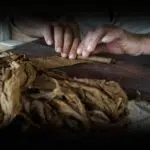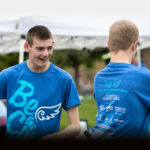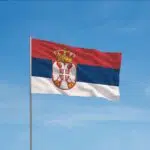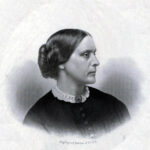This carnival tradition of Fastelavn is all set to roll on February 15. Fastelavn is a Danish tradition, although it is celebrated in many Northern European countries like Norway, Sweden, Iceland, Greenland, Finland, Estonia, and the Faroe Islands. The Swedish counterpart is Fastlagen, the Icelandic is Öskudagur, the Finnish is Laskiainen, the Estonian is Vastlapäev, and the German is Fastelovend. The only town in Iceland that celebrates Fastelavn on the same day as the other Nordic countries is Ísafjörður, which prefers to call it Maskadagur (mask-day).
History of Fastelavn
Fastelavn has been taking place in February every year since Lent started being observed. It is related to the Roman Catholic tradition of Carnival which takes place before Lent, although the festival has had certain distinctive characteristics since Denmark became a Protestant nation. It occurs the week before the Christian season of Lent, ending on Shrove Tuesday, the day before Ash Wednesday, which is the first day of Lent.
While it is primarily a Danish celebration, the traditions of the festivity may vary somewhat across the countries and regions, with some traditions changing over time. The word comes from the Old Danish term ‘fastelaghen,’ which itself comes from the Middle Low German term ‘vastel-avent’ (‘fast evening’). Its other variants also include Dutch Vastenavond, Kölsch Fastelovend, Limburgish Vastelaovend, Scots Fastens-een, and Latvian Vastlāvji, among others.
Similar traditions of the carnival ball celebrations in all countries include children dressing up in costumes and walking door-to-door collecting treats for the feast while singing the Fastelavn song through it all. The song is literally about sweet buns, specifically Lent buns, or ‘Fastelavnsboller’ as they call it, but the kids are offered candy or money as they sing. We know what you’re thinking, that sounds like a certain spooky holiday celebrated on the last day of October. Well, you’re right, some people often call Fastelavn a hybrid of Halloween and carnival. Another tradition apart from singing kids is called ‘slå katten af tønden’ (hit the cat out of the barrel). Similar to the concept of a piñata, it occurs after the church service of Shrove Sunday in Denmark.
Fastelavn timeline
Norwich students’ experience of celebrations in Paris lead to masked balls.
Kunstnerforeningen’s carnival balls play Johan Svendsen's 'Norsk Kunstner Karneval.'
Svendsen’s ‘Fest Polonaise’ performance inspires Edvard Grieg’s ‘Aus Dem Karneval.’
The grand opening of the Grand Hotel gives the carnival balls’ an ongoing venue.
Tårnseilerne hosts the annual masquerade balls after Rococo Hall burns down.
Fastelavn FAQs
Why is Fastelavn celebrated?
It is an old tradition with deep cultural roots. It is based on the Roman Catholic tradition of celebrating the days before Lent.
What are the traditions in Denmark?
Especially during Easter time, Denmark has a lot of traditions, including painting eggs, going on egg hunts, and rolling eggs downhill. In the spring, Denmark also celebrates Whitsunday and Pentecost.
Who is the most famous person in Denmark?
Talented actors like Viggo Mortensen and Mads Mikkelsen hail from Denmark. Other notable personalities include the singer Lukas Graham, tennis player Caroline Wozniacki and footballer Nicklas Bendtner.
Fastelavn Activities
Hit the cat out of the barrel
Don’t worry, you don’t have to hit or harm any cat whatsoever. It’s like a piñata in the form of a wooden barrel (with the image of a cat on it), which is filled with candy.
Eat some fastelavnsbollers
These are also known as Fastelavn buns, Shrovetide buns, or Lenten buns. They are sweet round rolls with icing and filled with whipped cream. Similar buns and rolls are enjoyed in other countries like the Swedish Semla.
Attend a ball
Take part in the carnival balls, masked balls, parades, and other processions like Ash Wednesday and Pancake Tuesday. The Carnival tradition includes masks, costumes, and even opera performances!
5 Interesting Facts About Fastelavn
Lucky cat
In the 1500s, they used a live cat in the barrel, the cat wasn’t killed and was freed after.
Shrovetide rod
Or ‘fastelavnsris,’ is used by kids to wake their parents so they get the sweet treats.
Further flogging
Young adults bid good morning by play fighting and spreading ashes on each other.
The sermon
Children are taught to focus on appearances and what it means to hide behind a mask.
The boats
In the 1700s there were special boat processions on the coast with decor and music.
Why We Love Fastelavn
It’s like Halloween
With the kids going door to door in trick-or-treat style for Fastelavn, it is very close to Halloween. And we love Halloween!
It’s a ball
The Carnival balls and masquerade balls sound super fun. The processions are full of surprises too, from boats to parades!
It’s culturally rich
The entire festivity comes from a deeply rooted culture. It is no wonder the Roman Catholic population of the Northern European countries celebrate it.
Fastelavn dates
| Year | Date | Day |
|---|---|---|
| 2024 | February 11 | Sunday |
| 2025 | March 2 | Sunday |
| 2026 | February 15 | Sunday |
































